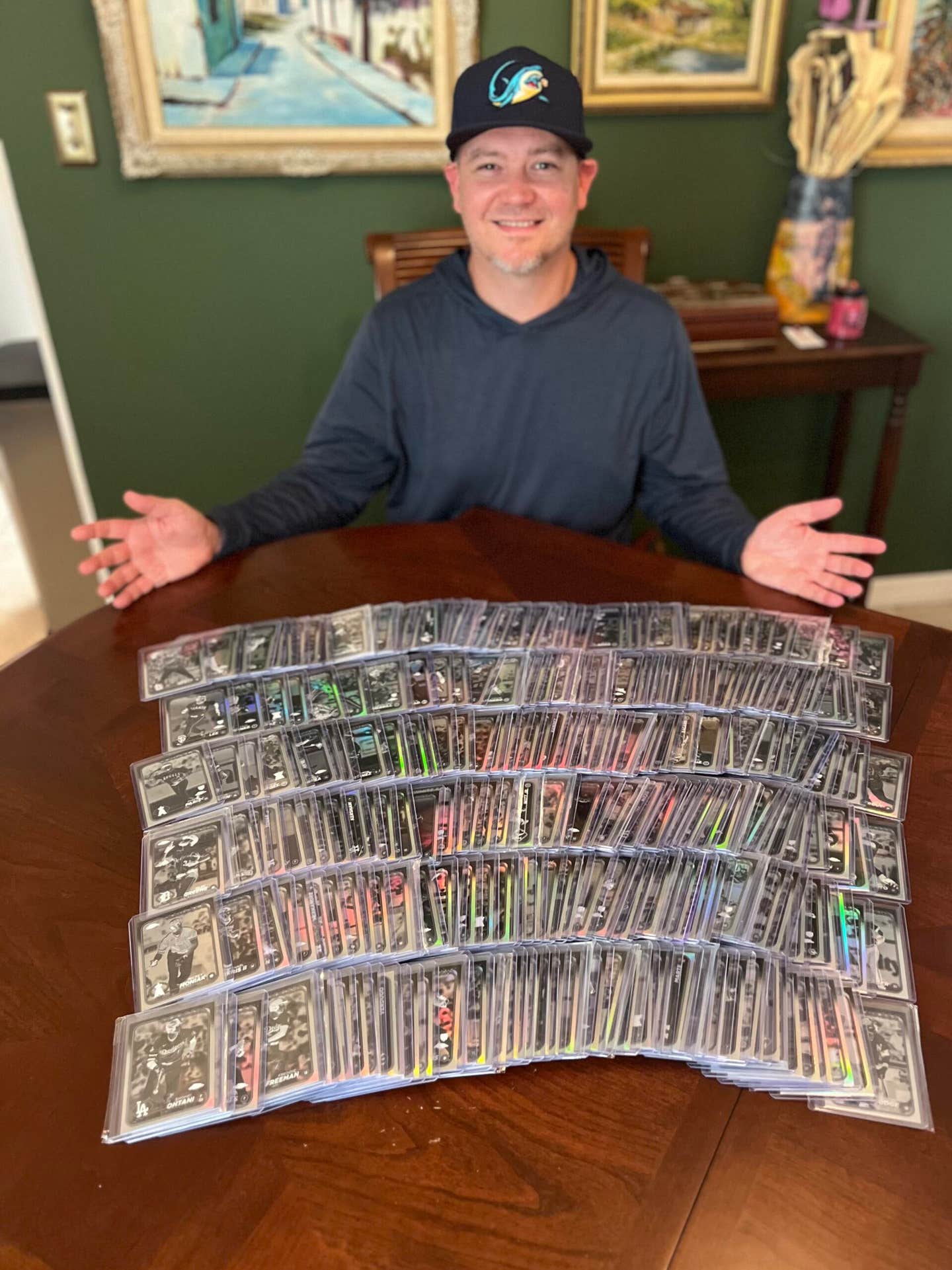Wilt Chamberlain
The 1971 Harlem Globetrotters cards still bring smiles
By Doug Koztoski
Whistles in basketball often mean bad news: stoppage of play of some sort; perhaps a player got caught breaking a rule; maybe someone just earned an ejection. That is, of course, unless the whistle involves The Harlem Globetrotters and their famous warm-up song “Sweet Georgia Brown,” featuring the whistling of Brother Bones—certainly one of the best-known tunes associated with sports.
The Globetrotters origins, hoops wizardry blended with a sense of humor, trace back to the 1920s and by the late 1960s they had established a strong following around the world, with U.S.-based fans among their biggest. By the early 1970s, with standout players Geese Ausbie, Meadowlark Lemon and Curly Neal, the organization likely reached their most popular era.
Starring in a Saturday morning cartoon series and a run of comic books in the early ’70s made the b-ball players household names. In 1971 a couple of Fleer Company-produced Globetrotters card sets hit the hobby, as well: an 84-card issue that came in wax packs, this article’s main focus, and a 28-piece offering included in four-card packs wrapped in cellophane in boxes of Cocoa Puffs cereal.
Allen Lindstrom collects the “Globetrotters 84” set, and he stumbled upon some at an affordable price via auction in recent years.
Lindstrom, born in ’71, witnessed the Harlem Hoops Houdinis in person as a child.
“I am predominantly a baseball collector,” he said, “but I really enjoy the Globetrotters set because of the guys and their style of play that I saw when I was around 10 years old.”
In general the hobbyist likes the cards featuring Lemon and Neal, but he also leans toward the more unusual pasteboards highlighted by a bicycle on one card, some with “the football play” and those with other interesting poses.
Steven Peters collected the set as a kid with his older brother and had contemplated reconnecting with the issue a few years ago.
“I thought it would be impossible (to assemble the set), but I threw some modest bids on some high-grade cards nearing the end of auction on eBay,” Peters said. “I was blessed to win. I was hooked and obsessed with finishing the set from that point on.”
Like Lindstrom, Peters now owns one of the issue’s top-ranked samples on the PSA Set Registry.
Peters pegged the pasteboards as “pretty popular” overall and said those from the set that appear online sell quickly.
“Guys my age, 49, and give or take 10 years remember how great the Globetrotters were as basketball players and entertainers. They brought a lot of joy to people and just flipping through the cards brings back those memories.”
Now you see em’, now you don’t
The “84” set of Globetrotters cards are not rare, Lindstrom pointed out, “but they tend to have very bad centering issues.” At the 2018 National Sports Collectors Convention he said he “was on a mission to find some graded ones and I did not find one anywhere.” One dealer, the collector said, did have “stacks of the commons” from the offering, but sharp corners and well-centered examples were about as frequent as a Globetrotter missing a trick shot.
Among the toughest-to-find for Lindstrom from the set: “#1 Bob “Showboat” Hall, some of the Meadowlark Lemons in higher grades, and a run of Curly Neals are a little hard-to-find.”
For Peters, #15 of Lemon and #22 Geese Ausbie will always live in “a special place in my heart, not only because I loved watching both men perform, but because they were the last I needed for the set. As far as ones that really bring back memories and a love of the Globetrotters though, my favorites are #68 (Football Routine), #70 Meadowlark is safe (Lemon slides into home) and #71 (Lemon at bat). Those routines crack me up. As I love sports, baseball in particular, it was just neat that they also had that interest” and incorporated some other sports into their act, “that really showed their versatility.”
Snap, Crackle, Pop, sort of
About 1,750 show up in PSA holders, with, coincidentally, around 84 percent of those in PSA 7 or better. The Cocoa Puffs set, meanwhile, basically a scaled-down version of the “84” issue, registers only about 300 total in PSA’s “Pop” Report, and many are high grade.
Other than the reference of the number of cards in the set noted on the backs, the best way to tell the difference between the “84” and Cocoa Puffs versions at a glance, is most of the cereal card fronts contain facsimile autographs, mainly, however, when just individual players are pictured.
On average, Lindstrom finds decent raw versions from the set “at a dollar or less each, and at the National I only found one with 60/40 centering or better, and I probably paid $2 for it.”
And, when Lindstrom opened up a 1971 Fleer Globetrotter pack he received a surprise with his handful of cards: “The run of (seven) cards was successive (consecutive numbers).”
Working the ball cards down court
Future interest in the 1971 Globetrotter issues will likely be limited in scope for many, but Lindstrom believes there will still be interest in the cards in coming years “because the Globetrotters are still in existence and they do a good job of reflecting on their history in person and whenever they are on TV.”
Peters, meantime, sees a decent possibility the cards will gain in popularity over the next decade, at least for a certain segment of the hobby.
“As people who remember them will be at an age with discretionary income, the memories and joy they bring while looking through the cards are priceless.”
Memories good enough to make you whistle a sweet song.
Doug Koztoski is a frequent SCD contributor. He can be reached at dkoz3000@gmail.com








